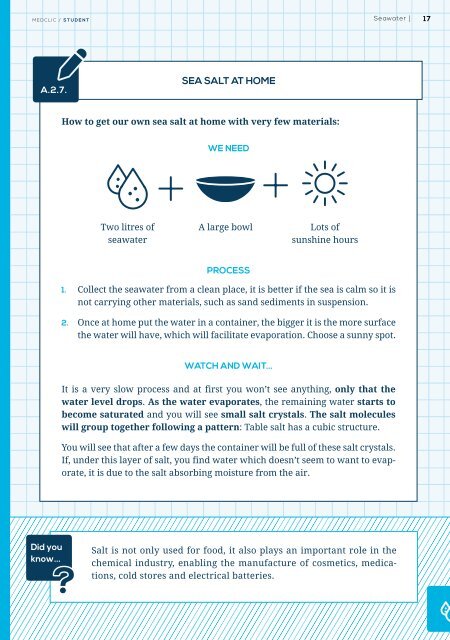u2_web_seawater
You also want an ePaper? Increase the reach of your titles
YUMPU automatically turns print PDFs into web optimized ePapers that Google loves.
MEDCLIC / STUDENT<br />
Seawater |<br />
17<br />
A.2.7.<br />
SEA SALT AT HOME<br />
How to get our own sea salt at home with very few materials:<br />
We need<br />
Two litres of<br />
<strong>seawater</strong><br />
A large bowl<br />
Lots of<br />
sunshine hours<br />
Process<br />
1. Collect the <strong>seawater</strong> from a clean place, it is better if the sea is calm so it is<br />
not carrying other materials, such as sand sediments in suspension.<br />
2. Once at home put the water in a container, the bigger it is the more surface<br />
the water will have, which will facilitate evaporation. Choose a sunny spot.<br />
WATCH AND WAIT...<br />
It is a very slow process and at first you won’t see anything, only that the<br />
water level drops. As the water evaporates, the remaining water starts to<br />
become saturated and you will see small salt crystals. The salt molecules<br />
will group together following a pattern: Table salt has a cubic structure.<br />
You will see that after a few days the container will be full of these salt crystals.<br />
If, under this layer of salt, you find water which doesn’t seem to want to evaporate,<br />
it is due to the salt absorbing moisture from the air.<br />
Did you<br />
know...<br />
Salt is not only used for food, it also plays an important role in the<br />
chemical industry, enabling the manufacture of cosmetics, medications,<br />
cold stores and electrical batteries.




